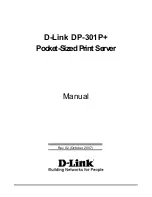
Customizing User Public Information Directories (Unix)
314
Netscape Enterprise Server Administrator’s Guide
With this system, clients can access your server with a certain URL that the
server recognizes as a public information directory. For example, suppose you
choose the prefix
~
and the directory
public_html
. If a request comes in for
http://www.netscape.com/~jdoe/aboutjane.html
, the server
recognizes that
~jdoe
refers to a users’ public information directory. It looks
up
jdoe
in the system’s user database and finds Jane’s home directory. The
server then looks at
~/jdoe/public_html/aboutjane.html
.
To configure your server to use public directories, you need to choose a user
URL prefix. The usual prefix is
~
because the tilde character is the standard
Unix prefix for accessing a user’s home directory. Next, you need to choose the
subdirectory in the user’s home directory where the server looks for HTML files.
A typical directory is
public_html
.
The server needs to know where to look for a file that lists users on your
system. The server uses this file to determine valid usernames and to find their
home directories. If you use the system password file for this purpose, the
server uses standard library calls to look up users. Alternatively, you can create
another user file to look up users. You can specify that user file with an
absolute path.
Each line in the file should have this structure (the elements in the
/etc/
passwd
file that aren’t needed are indicated with
*
):
username:*:*:groupid:*:homedir:*
You also have the option of loading the entire password file on startup. If you
choose this option, the server loads the password file into memory when it
starts, making user lookups much faster. If you have a very large password file,
however, this option can use too much memory.
Finally, you can apply a configuration style for the server to control access to
directories from public information directories. This prevents users from
creating symbolic links to information you do not want made public.
To set up user directories, use the User Document Directories page in the
Server Manager.
Содержание Netscape Enterprise Server
Страница 30: ...Contacting Technical Support 30 Netscape Enterprise Server Administrator s Guide ...
Страница 31: ...Part 1 Server Basics 31 1 Server Basics Introduction to Enterprise Server Administering Enterprise Servers ...
Страница 32: ...32 Netscape Enterprise Server Administrator s Guide ...
Страница 56: ...Sending Error Information to Netscape 56 Netscape Enterprise Server Administrator s Guide ...
Страница 64: ...Migrating a Server From a Previous Version 64 Netscape Enterprise Server Administrator s Guide ...
Страница 66: ...66 Netscape Enterprise Server Administrator s Guide ...
Страница 112: ...Managing a Preferred Language List 112 Netscape Enterprise Server Administrator s Guide ...
Страница 158: ...158 Netscape Enterprise Server Administrator s Guide ...
Страница 182: ...Using the Watchdog uxwdog Process Unix 182 Netscape Enterprise Server Administrator s Guide ...
Страница 196: ...Viewing Events Windows NT 196 Netscape Enterprise Server Administrator s Guide ...
Страница 218: ...Enabling the Subagent 218 Netscape Enterprise Server Administrator s Guide ...
Страница 266: ...266 Netscape Enterprise Server Administrator s Guide ...
Страница 302: ...Enabling WAI Services 302 Netscape Enterprise Server Administrator s Guide ...
Страница 310: ...310 Netscape Enterprise Server Administrator s Guide ...
Страница 390: ...Customizing the Web Publisher User Interface 390 Netscape Enterprise Server Administrator s Guide ...
Страница 446: ...Customizing the Search Interface 446 Netscape Enterprise Server Administrator s Guide ...
Страница 448: ...448 Netscape Enterprise Server Administrator s Guide ...
Страница 454: ...Responses 454 Netscape Enterprise Server Administrator s Guide ...
Страница 464: ...Referencing ACL Files in obj conf 464 Netscape Enterprise Server Administrator s Guide ...
Страница 504: ...504 Netscape Enterprise Server Administrator s Guide ...
















































